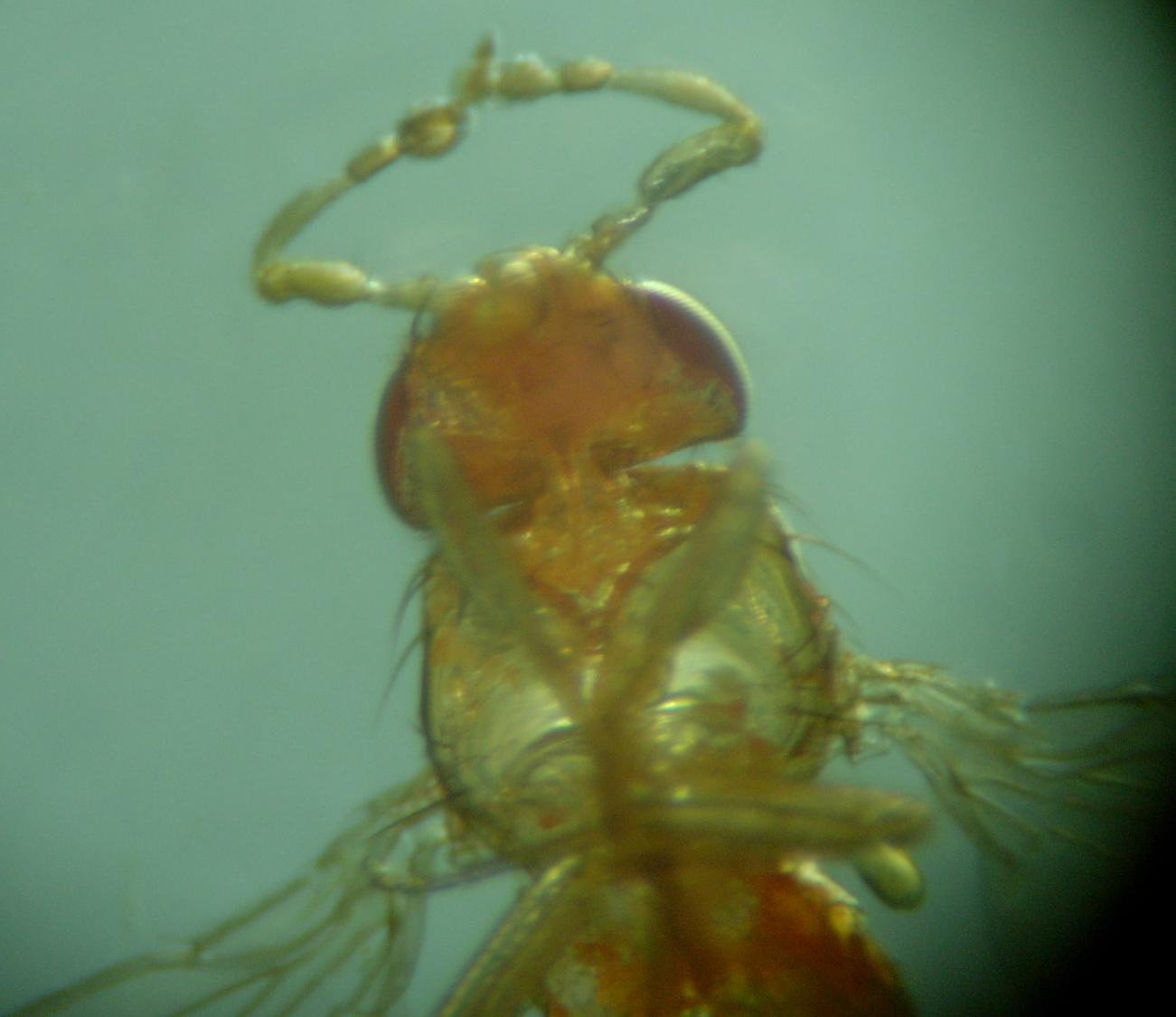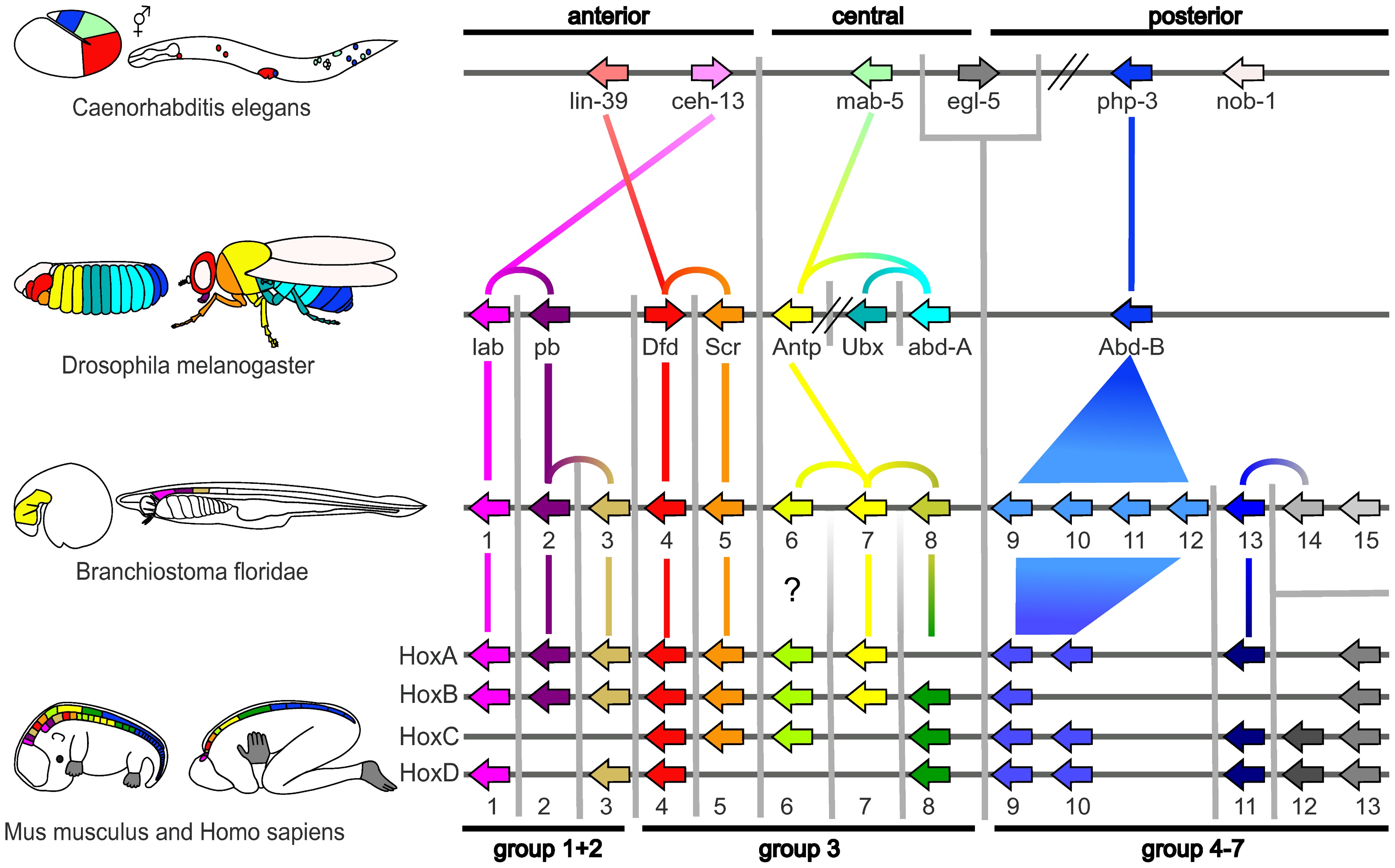|
Homeotic
In evolutionary developmental biology, homeosis is the transformation of one organ into another, arising from mutation in or misexpression of certain developmentally critical genes, specifically homeotic genes. In animals, these developmental genes specifically control the development of organs on their anteroposterior axis. In plants, however, the developmental genes affected by homeosis may control anything from the development of a stamen or petals to the development of chlorophyll. Homeosis may be caused by mutations in Hox genes, found in animals, or others such as the MADS-box family in plants. Homeosis is a characteristic that has helped insects become as successful and diverse as they are. Homeotic mutations work by changing segment identity during development. For example, the '' Ultrabithorax'' genotype gives a phenotype wherein metathoracic and first abdominal segments become mesothoracic segments. Another well-known example is ''Antennapedia'': a gain-of-function alle ... [...More Info...] [...Related Items...] OR: [Wikipedia] [Google] [Baidu] |
Homeotic Gene
In evolutionary developmental biology, homeotic genes are genes which regulate the development of anatomical structures in various organisms such as echinoderms, insects, mammals, and plants. Homeotic genes often encode transcription factor proteins, and these proteins affect development by regulating downstream gene networks involved in body patterning. Mutations in homeotic genes cause displaced body parts ( homeosis), such as antennae growing at the posterior of the fly instead of at the head. Mutations that lead to development of ectopic structures are usually lethal. Types There are several subsets of homeotic genes. They include many of the Hox and ParaHox genes that are important for segmentation. Hox genes are found in bilateral animals, including ''Drosophila'' (in which they were first discovered) and humans. Hox genes are a subset of the homeobox genes. The Hox genes are often conserved across species, so some of the Hox genes of ''Drosophila'' are homologous to tho ... [...More Info...] [...Related Items...] OR: [Wikipedia] [Google] [Baidu] |
Homeodomain
A homeobox is a DNA sequence, around 180 base pairs long, that regulates large-scale anatomical features in the early stages of embryonic development. For instance, mutations in a homeobox may change large-scale anatomical features of the full-grown organism. Homeoboxes are found within genes that are involved in the regulation of patterns of anatomical development (morphogenesis) in animals, fungi, plants, and numerous single cell eukaryotes. Homeobox genes encode homeodomain protein products that are transcription factors sharing a characteristic protein fold structure that binds DNA to regulate expression of target genes. Homeodomain proteins regulate gene expression and cell differentiation during early embryonic development, thus mutations in homeobox genes can cause developmental disorders. Homeosis is a term coined by William Bateson to describe the outright replacement of a discrete body part with another body part, e.g. antennapedia—replacement of the antenna on ... [...More Info...] [...Related Items...] OR: [Wikipedia] [Google] [Baidu] |
Homeobox
A homeobox is a DNA sequence, around 180 base pairs long, that regulates large-scale anatomical features in the early stages of embryonic development. For instance, mutations in a homeobox may change large-scale anatomical features of the full-grown organism. Homeoboxes are found within genes that are involved in the regulation of patterns of anatomical development (morphogenesis) in animals, fungi, plants, and numerous single cell eukaryotes. Homeobox genes encode homeodomain protein products that are transcription factors sharing a characteristic protein fold structure that binds DNA to regulate expression of target genes. Homeodomain proteins regulate gene expression and cell differentiation during early embryonic development, thus mutations in homeobox genes can cause developmental disorders. Homeosis is a term coined by William Bateson to describe the outright replacement of a discrete body part with another body part, e.g. antennapedia—replacement of the antenna ... [...More Info...] [...Related Items...] OR: [Wikipedia] [Google] [Baidu] |
Hox Genes
Hox genes, a subset of homeobox genes, are a group of related genes that specify regions of the body plan of an embryo along the head-tail axis of animals. Hox proteins encode and specify the characteristics of 'position', ensuring that the correct structures form in the correct places of the body. For example, Hox genes in insects specify which appendages form on a segment (for example, legs, antennae, and wings in fruit flies), and Hox genes in vertebrates specify the types and shape of vertebrae that will form. In segmented animals, Hox proteins thus confer segmental or positional identity, but do not form the actual segments themselves. Studies on Hox genes in ciliated larvae have shown they are only expressed in future adult tissues. In larvae with gradual metamorphosis the Hox genes are activated in tissues of the larval body, generally in the trunk region, that will be maintained through metamorphosis. In larvae with complete metamorphosis the Hox genes are mainly expres ... [...More Info...] [...Related Items...] OR: [Wikipedia] [Google] [Baidu] |
MADS-box
The MADS box is a conserved sequence motif. The genes which contain this motif are called the MADS-box gene family. The MADS box encodes the DNA-binding MADS domain. The MADS domain binds to DNA sequences of high similarity to the motif CC /Tsub>6GG termed the CArG-box. MADS-domain proteins are generally transcription factors. The length of the MADS-box reported by various researchers varies somewhat, but typical lengths are in the range of 168 to 180 base pairs, i.e. the encoded MADS domain has a length of 56 to 60 amino acids. There is evidence that the MADS domain evolved from a sequence stretch of a type II topoisomerase in a common ancestor of all extant eukaryotes. Origin of name and history of research The first MADS-box gene to be identified was ''ARG80'' from budding yeast, ''Saccharomyces cerevisiae'', but was at that time not recognized as a member of a large gene family. The MADS-box gene family got its name later as an acronym referring to the four founding members, ... [...More Info...] [...Related Items...] OR: [Wikipedia] [Google] [Baidu] |
Evolutionary Developmental Biology
Evolutionary developmental biology (informally, evo-devo) is a field of biological research that compares the developmental processes of different organisms to infer how developmental processes evolved. The field grew from 19th-century beginnings, where embryology faced a mystery: zoologists did not know how embryonic development was controlled at the molecular level. Charles Darwin noted that having similar embryos implied common ancestry, but little progress was made until the 1970s. Then, recombinant DNA technology at last brought embryology together with molecular genetics. A key early discovery was of homeotic genes that regulate development in a wide range of eukaryotes. The field is composed of multiple core evolutionary concepts. One is deep homology, the finding that dissimilar organs such as the eyes of insects, vertebrates and cephalopod molluscs, long thought to have evolved separately, are controlled by similar genes such as ''pax-6'', from the evo-devo gene ... [...More Info...] [...Related Items...] OR: [Wikipedia] [Google] [Baidu] |
Angiosperms
Flowering plants are plants that bear flowers and fruits, and form the clade Angiospermae (), commonly called angiosperms. They include all forbs (flowering plants without a woody stem), grasses and grass-like plants, a vast majority of broad-leaved trees, shrubs and vines, and most aquatic plants. The term "angiosperm" is derived from the Greek words ἀγγεῖον / ('container, vessel') and σπέρμα / ('seed'), meaning that the seeds are enclosed within a fruit. They are by far the most diverse group of land plants with 64 orders, 416 families, approximately 13,000 known genera and 300,000 known species. Angiosperms were formerly called Magnoliophyta (). Angiosperms are distinguished from the other seed-producing plants, the gymnosperms, by having flowers, xylem consisting of vessel elements instead of tracheids, endosperm within their seeds, and fruits that completely envelop the seeds. The ancestors of flowering plants diverged from the common ances ... [...More Info...] [...Related Items...] OR: [Wikipedia] [Google] [Baidu] |
Clarkia
''Clarkia'' is a genus within the flowering plant family Onagraceae. Over 40 species are currently classified in ''Clarkia''; almost all are native to western North America, though one species (''Clarkia tenella'') is native to South America. Clarkias are typically annual herbs, growing either prostrate or erect to a height of less than 2 metres. Their leaves are small and simple, from 1 to 10 cm in length depending on the species. Their flowers have four sepals and four petals, usually white, pink, or red, and are often spotted or streaked. Their fruit are elongated, cylindrical pods, usually 4-grooved or 8-grooved, and when mature they hold many tiny, cubical seeds. Several members of the genus are sometimes referred to by the common name "godetia", including ''Clarkia amoena'', ''Clarkia affinis'', and ''Clarkia lassenensis'' (the Lassen godetia). This is because they were formerly classified in a genus called ''Godetia'', which is no longer recognised since its me ... [...More Info...] [...Related Items...] OR: [Wikipedia] [Google] [Baidu] |
Onagraceae
The Onagraceae are a family of flowering plants known as the willowherb family or evening primrose family. They include about 650 species of herbs, shrubs, and treesOnagraceae. Flora of China. in 17 genera. The family is widespread, occurring on every continent from boreal to tropical regions. The family includes a number of popular plants, including evening primroses ('' Oenothera'') and |
Edward B
Edward is an English given name. It is derived from the Anglo-Saxon name ''Ēadweard'', composed of the elements '' ēad'' "wealth, fortune; prosperous" and '' weard'' "guardian, protector”. History The name Edward was very popular in Anglo-Saxon England, but the rule of the Norman and Plantagenet dynasties had effectively ended its use amongst the upper classes. The popularity of the name was revived when Henry III named his firstborn son, the future Edward I, as part of his efforts to promote a cult around Edward the Confessor, for whom Henry had a deep admiration. Variant forms The name has been adopted in the Iberian peninsula since the 15th century, due to Edward, King of Portugal, whose mother was English. The Spanish/Portuguese forms of the name are Eduardo and Duarte. Other variant forms include French Édouard, Italian Edoardo and Odoardo, German, Dutch, Czech and Romanian Eduard and Scandinavian Edvard. Short forms include Ed, Eddy, Eddie, Ted, Teddy a ... [...More Info...] [...Related Items...] OR: [Wikipedia] [Google] [Baidu] |
Antennapedia2
''Antennapedia'' (abbreviated ''Antp'') is a Hox gene first discovered in ''Drosophila'' which controls the formation of legs during development. Loss-of-function mutations in the regulatory region of this gene result in the development of the second leg pair into ectopic antennae. By contrast gain-of-function alleles convert antennae into ectopic legs. This is just one illustration of the tendency of organisms to exhibit variations on a theme: modulated repetition. Legs and antennae are related to one another as much as molars are to incisors, fingers are to toes, and arms are to legs. ''Antp'' also refers to a gene complex (ANT-C) in ''Drosophila'' ending with the ''Antp'' gene. It is responsible for formation and differentiation of the thoracic and head segments of the fly's body. Origin of ''Antennapedia''-class homeobox gene The origin of the ancestor homeobox gene is an important aspect of the evolution of the ''Antp''-class ''Hox'' genes. Early evolution of the ... [...More Info...] [...Related Items...] OR: [Wikipedia] [Google] [Baidu] |
Metazoa
Animals are multicellular, eukaryotic organisms in the biological kingdom Animalia. With few exceptions, animals consume organic material, breathe oxygen, are able to move, can reproduce sexually, and go through an ontogenetic stage in which their body consists of a hollow sphere of cells, the blastula, during embryonic development. Over 1.5 million living animal species have been Species description, described—of which around 1 million are Insecta, insects—but it has been estimated there are over 7 million animal species in total. Animals range in length from to . They have Ecology, complex interactions with each other and their environments, forming intricate food webs. The scientific study of animals is known as zoology. Most living animal species are in Bilateria, a clade whose members have a Symmetry in biology#Bilateral symmetry, bilaterally symmetric body plan. The Bilateria include the protostomes, containing animals such as nematodes, arthropods, flat ... [...More Info...] [...Related Items...] OR: [Wikipedia] [Google] [Baidu] |




